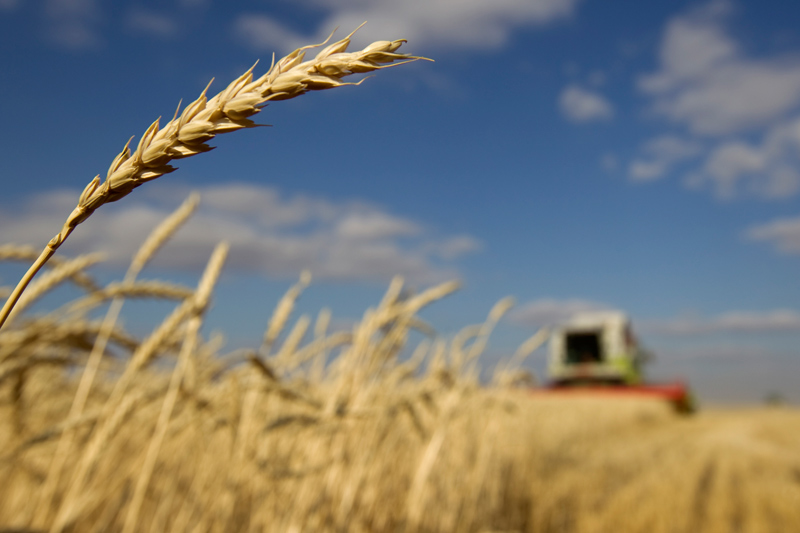Investing.com - U.S. wheat and corn futures traded near multi-month lows on Thursday, after the U.S. Department of Agriculture forecast higher-than-expected domestic supplies this year.
On the Chicago Mercantile Exchange, U.S. wheat for July delivery fell to a session low of $5.8760 a bushel, the weakest level since February 13, before turning higher to last trade at $5.9250 during U.S. morning hours, up 0.53%, or 3.1 cents.
Wheat tumbled 2%, or 12.0, cents, on Wednesday to settle at $5.8920 after the USDA raised its outlook for U.S. inventories at the end of the 2014-15 season that started on June 1 to 574 million bushels from the 540 million bushels forecast last month.
The upgrade reflected lower usage of the grain in livestock feed and weaker than expected wheat exports from the U.S.
Elsewhere on the CBOT, U.S. corn for July delivery eased up 0.43%, or 1.88 cents, to trade at $4.4288 a bushel. Corn slumped to $4.3920 on Wednesday, the lowest since February 14, before settling at $4.4100, down 1.01%, or 4.4 cents.
The USDA said that U.S. farmers will harvest 13.935 billion bushels of corn this year, unchanged from a previous estimate and slightly higher than last year's record crop of 13.925 billion.
The USDA also projected that global corn inventories will total 182.7 million tonnes in the 2014-15 marketing year, up from May’s forecast of 181.73 million tonnes, citing increased output in Brazil and India.
Meanwhile, U.S. soybeans for July delivery hit a daily low of $14.4200 a bushel, the weakest since March 31, before turning higher to trade at $14.5213, up 0.41%, or 5.92 cents.
The July soybean contract ended Tuesday’s session down 1.16%, or 17.0 cents, to settle at $14.4540.
The USDA said that U.S. soybean production in the 2014-15 season will total 3.635 billion bushels, unchanged from May’s estimate and an all-time high.
The agency also said U.S. inventories of the oilseed at the end of the 2014-15 season will total 325 million bushels, below last month's forecast for 330 million.
Corn is the biggest U.S. crop, followed by soybeans, government figures show. Wheat was fourth, behind hay.
